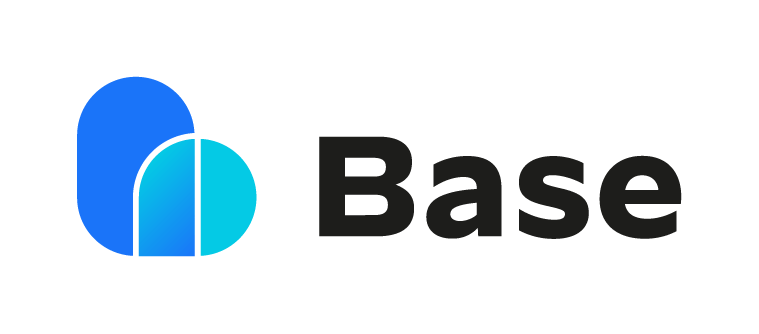Home » The Customer Led Growth Blog » Customer Advocacy Program: Empower Customers to Become Great Advocates
Customer Advocacy Program: Empower Customers to Become Great Advocates

Customer Advocacy Program: Empower Customers to Become Great Advocates
We had the chance to chat with Adi Ezer, Customer Internal Marketing Manager at UiPath, and ask her a few questions about her awesome customer advocacy program. Read the interview below to see what she had to say.
Can you tell us a bit about the UiPath product?
We have a complete suite of products, but our core software is Robotic Process Automation (RPA) that supports organizations in automating repetitive tasks. Our customers are large Fortune 500 companies that license the software to create bots that can take on a lot of the mundane or low-level activities, which means that staff is freed up to take on higher-value tasks or add creative or strategic value elsewhere. The benefits are clear, accelerating digital transformation, reducing operational costs, and increasing employee satisfaction. Think about your day job. Now consider everything you would usually put in the “boring bucket” and imagine it taken away by software. Who would say no to that?
How did the customer advocacy program come about?
When I started at UiPath I was supporting customer success in product marketing. We saw that there was a common problem for our post-sale customers. They wanted more teams and departments to be using the software, reducing costs across the organization, eliminating human error, and improving employee satisfaction, but they were struggling to create awareness and adoption. We started out by providing tips and creating assets to support them. These could be anything from video content with real-life testimonials and customer journey stories, to slide decks to present to C-level execs for additional buy-in. We found that developers or engineers could see the value in the software but didn’t have the marketing experience to tell the right story. However, with the right assets, they were able to speak the right, customer-focused language. So, we decided to programatize it.
What were your goals for the advocacy program?
It was all about internal advocacy, as in – how we can help our loyal customers advocate for us. Our main focus is expansion. After we onboard a company as a customer, we look to help them get more value and at the same time help UiPath to expand its footprint. After all, someone from UiPath could come and do a workshop and tell you how exciting the product is, but when you hear it from colleagues who you trust, that word of mouth makes all the difference. It’s more effective than any marketing campaign.
At the same time as preventing churn and expanding, we’re also improving customer satisfaction. We’ve seen in our customer service metrics that our customers feel really supported. It stands to reason that if they have a problem and we’re providing the resources to help them free of charge, we’re going to get a great response and have happy customers! It’s a win-win.
What does the customer advocacy program look like?
We started with a huge document repository, and we have guidelines to help customers understand what they should use, depending on their objectives: here are some assets that you can use to build newsletter content, here is a great slide deck for meetings with the board, here’s an infographic that will speak to the HR or sales department, this is content that would be effective for getting grass-roots employees on board, while this is a better story to sell to a senior manager. We also have specific content for industries such as finance, healthcare, or insurance that speaks to the specific pain points of those organizations.
One area that’s been a great success is our DIY manuals. We wanted to convey to customers that these days, the way people consume content is changing. Video is the easiest way to get people to consume information. So, we created a “testimonial in a box” manual that shows how to shoot your own low-cost testimonials of existing employees using our product. It includes everything from the accessories you can buy to turn your phone into a recording machine, to what questions to ask, and how to edit the video when you’re done.
How do you help customers engage with these assets?
We recommend that customers create a portal for RPA, using their own systems like SharePoint or the company intranet. They can create events to help customers engage with the portal, such as a launch event, or a celebration of new uses of the product. We like to create events around milestones such as the 50th bot in production, complete with incentives like bot cupcakes to enhance the customer experience!
We also make sure that we have customer-based content for every stage of the customer journey, from raising awareness about RPA, to finding the right processes to automate, showcasing success, and scaling and driving adoption. There will always be people who need convincing, who have fears around automation or digital transformation. That content is evergreen, and customers will always want those resources. Sometimes just seeing those assets helps customers understand the challenges they are facing.
Is the content generic, or do you create bespoke assets?
Both! We have created a customer advocacy program with two tiers. Any customer can access the first tier, with free-of-charge assets, pre-recorded webinars, and customer-focused collateral. We listen to our customer feedback on this, as often they know what they need better than we do. But they simply don’t have the marketing resources and need us to be an extension of their team. We can then create new assets or edit existing ones to provide better value.
If you want more targeted or tailored support, we can create specific videos or unique decks for your company, bring in designers or copywriters to respond to niche challenges that a company is having. This is a second, optional, paid tier.
How does the customer advocacy program fit with your company culture?
It’s very much a part of our company culture and vision. Our marketing strategy is about building a customer relationship. We’re not that kind of company that sells you something and then disappears. We’re here for the long term, as long as our customers need us.
Our CSMs and our sales teams are now aware of how they can enable customers with this program, and we promote what we’re doing across the company with our own version of the internal portal, showcasing our success. One great event was last year at our annual forward. We had workshops for our customers on how DIY testimonials work, how you shoot videos and make them impressive on a small budget. These hands-on sessions really spoke to them and they left with something recorded that they could use. This sums up our methodology with the customer advocacy program–providing our customers with something really valuable and at the same time spreading the word and increasing engagement with our product.
What do you see as the next stages for the program?
Our own customers really influence the direction that our program is taking by telling us what they need on the ground. Our customers quickly understand it’s not just about error reduction or lowering operational costs. We’re solving new challenges that we haven’t thought of before, such as hyper-automation and change management. With each new challenge, we’re creating new assets to meet the marketing needs. Today, we’re seeing new demand because of the Coronavirus pandemic–issues of remote working, process automation, handling the increased load. We’re right on the frontlines of what our customers need, and responding in a very agile way.
If you’re looking to build your own customer advocacy program, Base can support you in gathering feedback, insights, and the true voice of the customer, as well as personalizing your customer relationship with your product users to support them in referral programs and becoming the best customer advocates for your brand.

